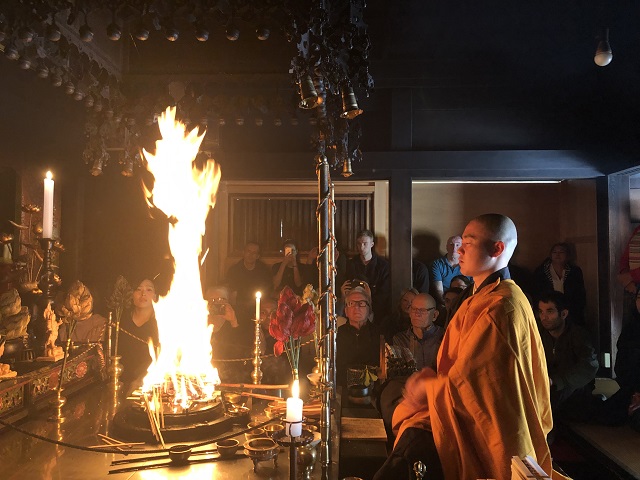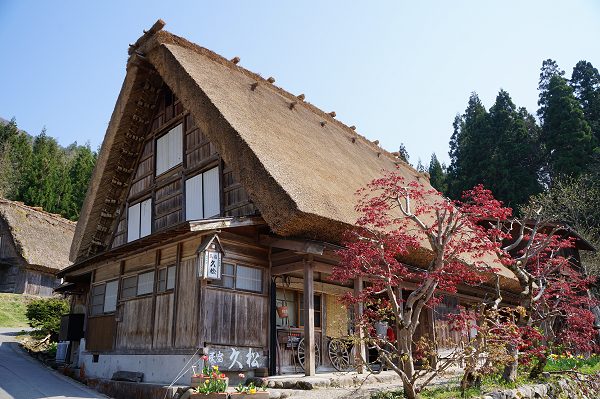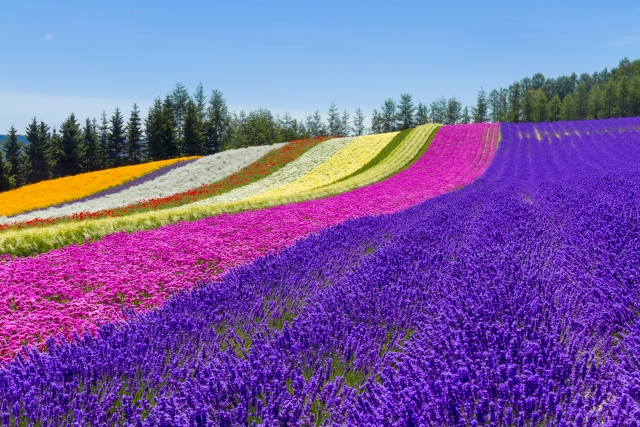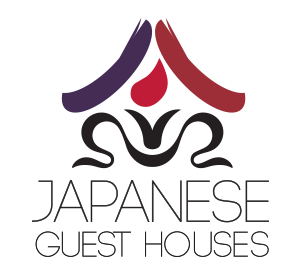Hot springs have a very long history in Japan, and they are an intimate part of Japanese culture. There are over 3,000 "onsen" ,or hot springs, in Japan. Many can be found at the ryokans available on Japanese Guest Houses.
Popular Destinations
Kyushu
Hokkaido
Kansai
Tohoku
Shikoku
When times do not allow you to travel abroad, it’s a chance to enjoy Japan more in-depth. Here we give you our suggestions for the best weekend getaways, maximum of 3 hours away from major Japanese cities.
Please create an account and ask your ryokan expert for availability and other ideas.
Hakone is one of the finest hot spring resorts in Japan. There are many wonderful ryokans including Kijitei Hoeiso, Hakone Kowakien Ten-yu, Hakone-Ginyu. Some of these ryokans have Japanese rooms with a private outdoor hot spring bath for you to bathe in comfort. Obviously hot springs are the main attraction in Hakone, but there is more to enjoy in Hakone: the Open Air Museum, Lake Ashinoko (also called Lake Ashi), a Mt. Fuji view from the lake (if you are lucky), …. Hakone is just 90 minutes from Shinjuku Station to Hakone-Yumoto Station on the Odakyu Line or 60 minutes from Tokyo Station.

Nikko is most famous for its brightly colored complex of temples and shrines at Toshogu where the founder of Edo Japan, Tokugawa Ieyasu, is enshrined. There are many hot spring ryokans in this area including Fuwari, Nikko Hoshino Yado, Senhime Monogatari, and others. On the second day of your exploration, you can visit Okunikko to see Lake Chuzenji and Kegon Waterfall. Nikko is 1 hour and 40 minutes from Tokyo Station to Nikko Station by JR.
Kamakura was the military capital during the Kamakura Period (1192 – 1333) as is best known for its Great Buddha statue which was cast in 1252. There are also many beautiful beaches and ryokans to enjoy. Some of our favorite are Iwamotoro and Ebisuya which is located on Enoshima Island. The train from Tokyo Station to Kamakura Station takes only 55 minutes. This is a great place to take your family.
Izu Peninsula is dotted with a number of luxury onsen (hot spring) areas including Shuzenji, Yugashima Onsen, Atami, Izu Nagaoka Onsen and many others. Some of our favorite ryokans in this area are Ishinoya, Ebisuya-Izu, Asaba Ryokan, Arai Ryokan and Atami Sekitei. There are also a number of ryokans near beaches and the sea including Shimoda View Hotel and Inatori Tokai. The train from Tokyo Station to Shuzenji Station will take about 1 hour and 40 minutes.
Oshima Island and Onsen is located within Tokyo prefecture but is a completely different world. This island is 2 hours by high-speed ferry and part of Fuji-Hakone-Izu National Park. This is a great island to visit if you just want to get away from everything. Some of our favorite ryokan at Hotel Akamon and Oshima Onsen Hotel.
Koyasan (also known as Mt Koya) is a holy temple complex is located on a mountain top, surrounded by cedar trees and mountain peaks. It is the center of Shingon Buddhism and one of the most important spiritual centers in Japan. One of the highlights of visiting Koyasan is staying at shukubo temples. Here you will have a vegetarian shojin ryori dinner and get to observe the monks performing their morning prayers. We recommend you stay at Shojoshin-in, Fukuchi-in, Eko-in, or Hoon-in though all of the shukubo on our website are good. The transportation from Namba Station in Osaka to Koyasan will take about 1 hour and 55 minutes. Please let us know if you want to take an evening tour of Okunoin with a local monk in English. We recommend purchasing Koyasan-World Heritage Ticket.

Takayama is a historic city in the Hida mountains. It is most famous for the Takayama Festival but is a delight to visit all year round. The main attraction is the Old Town which looks the same as it did during the Edo Period. On your second day in Takayama, you can visit Hida Furukawa and join a biking tour of rural Japan before heading back home, just let us know and we will make the arrangements for you. You may also consider adding a night to your trip and head to Shirakawa-go and spend the night in a thatched-roof farmhouse. Some of our favorite ryokans in Takayama are Tanabe Ryokan, Sumiyoshi, and Kotonoyume. The train from Osaka Station to Takayama takes 4 hours and 40 minutes.
Kanazawa is home to one of Japan’s best gardens, Kenrokuen Garden. There is also a wonderful samurai neighborhood and geisha district. For those looking for some mystery, you can visit Ninja Dera or Myoryuji Temple. This temple is filled with secret weapon storage areas and trapdoors and secret passageways. You may also consider adding a night to your trip and head to Shirakawa-go and spend the night in a thatched-roof farmhouse. Some of our favorite ryokans in Kanazawa are Chaya Ryokan, Asadaya, and Murataya. The train from Osaka Station to Kanazawa Station takes 2 hours and 45 minutes. Awazu Onsen and Kaga Onsen are nearby onsen (hot spring) towns that you can add to your trip.
Shirakawa-go is known for its thatched roof farmhouses that have been converted into minshuku inns. The best part of spending the night at Shirakawa-go is the evening stroll after dinner when all the day tourists are gone. Shirakawa-go is about a 1-hour bus ride from either Kanazawa or Takayama. All the minshuku offer about the same level of service and we recommend Kanja, Shirakawago-Shimizu, and Magoemon.
Takayama to Shirakawa-go to Kanazawa makes a very nice 3 night trip to the Hida area of Japan from either Tokyo or Osaka.

Kurashiki is a traditional merchant town known for its Edo style rice warehouses located along the willow-lined central canal. During the Edo Period, rice was used as currency so these warehouses were basically bank vaults. We recommend staying at Ryokan Kurashiki or Tsurugata. If you want a ryokan outside the city but with views of the Seto Inland Sea then we recommend Washu Blue Resort Kasago. The train from Kyoto Station to Kurashiki Station will take approximately 1 hour and 50 minutes.

Nara was Japan’s first permanent capital and was founded in 710 CE but the capital was moved to Heiankyo (Kyoto) in 794 CE. Nara is most famous for Todaiji Temple which houses one of the largest Buddha statues. There are also a number of wonderful ryokans to enjoy including Kankaso, KKR Nara Mikasaso, and the beautiful Meiji Style Nara Hotel. The train from Kyoto Station to Nara Station takes only 40 minutes.
Furano is a small town famous for its flower fields, Ski resorts, cheese factory, and winery. The town’s main economy is agriculture and tourism. About 25,000 people live in Furano, with one of the lowest density in Japan. Summer is the best time to visit the area, especially July (when lavender blooms). While in the area we suggest you stay at Pension Landscape Furano. It’s a 2 hour and 30 minutes train ride from Sapporo Station.

Sounkyo Onsen is a hot spring resort located in the Daisetsuzan National Park. The Daisetsuzan National Park has a wide range of hot springs, gorges, and mountains including Asahidake which is Hokkaido’s tallest mountain. At the northeast side of the park lies Sounkyo Onsen (Sounkyo Hot Spring), which is the most developed section of the park. The Sounkyo Gorge is the main attraction of this area. Some ryokan in Sounkyo provides a free shuttle bus for staying guests from Asahikawa or even Sapporo.
Miyajima is a tiny island located just off the mainland in the Seto Inland Sea near Hiroshima. Popularly regarded as one of the three most beautiful places in Japan (the other two are Amanohashidate on the Japan Sea coast and Matsushima in Tohoku). Miyajima is easily recognized in photos by the huge red torii (gate) which rises out of the ocean and guards the entrance to Itsushima Shrine. Miyajima is a gorgeous island and the perfect place for walks and hikes as it consists of steep, wooded hills. The island also has deer and monkeys which roam the island freely. Some of our favorite Ryokans in Miyajima are Ryoso Kawaguchi, Iwaso, and Momijiso. It’s a 2 hour and 30 minutes train ride from Fukuoka Station.
Beppu is located in Oita Prefecture on the island of Kyushu. Like many cities in Japan, it is sandwiched between the sea and mountains. It is best known for its onsen (hot springs) and in fact, produces more natural hot water than any other resort in Japan. Beppu boasts more than 2,900 hot spring vents within the city limits which produce more than 130,000 tons of hot water every day. Our popular ryokans in Beppu are Asahiya Ryokan, Mikasaya, and Miyukiya.
Yufuin is also known as Yufuin Hot Spring is a resort town located in Oita Prefecture on the island of Kyushu. In Yufuin the gensen or hot spring sources are spread out. This means that the tourists are spread out a bit. This simple fact means that Yufuin can maintain a small-town feel that is much more relaxing than other hot spring towns. City planners have also gone to great length to ensure that Yufuin does not get overdeveloped. In fact, local ordinances make it illegal to build tall buildings that might distract visitors from the natural beauty of the area. Our most popular ryokans in Yufuin are Hotaru and Yufuin Gettouan especially for their rooms with a private open-air bath.

Hyogo-ken Chijitoroku Ryokogyo 3-609
(Hyogo Prefecture Travel Agent License Number 3-609)
10-5-401-1-(2) Sakae-machi, Kawanishi-shi, Hyogo-ken Japan
Part of the Rediscover Group of Travel Companies Rediscover Japan Co., Ltd. (Japanese Guest Houses)
Website Design & Marketing by: Douglas Marketing Group

